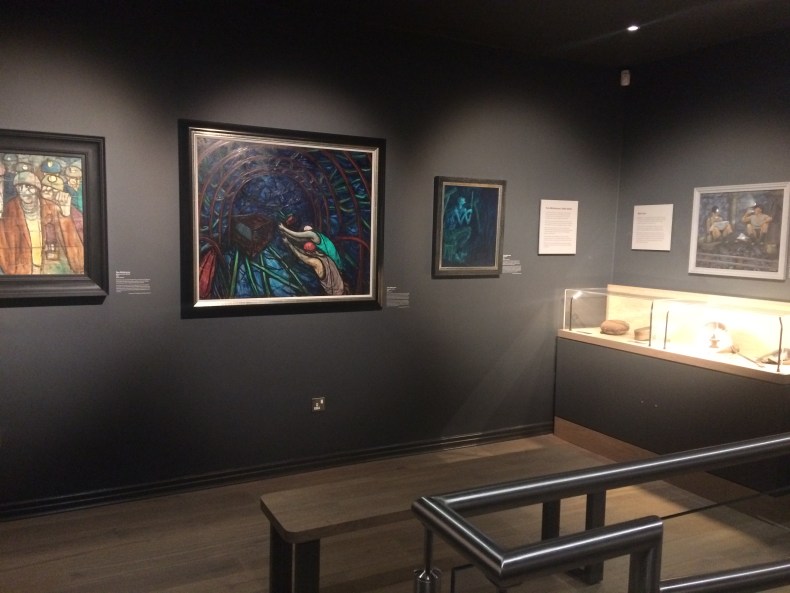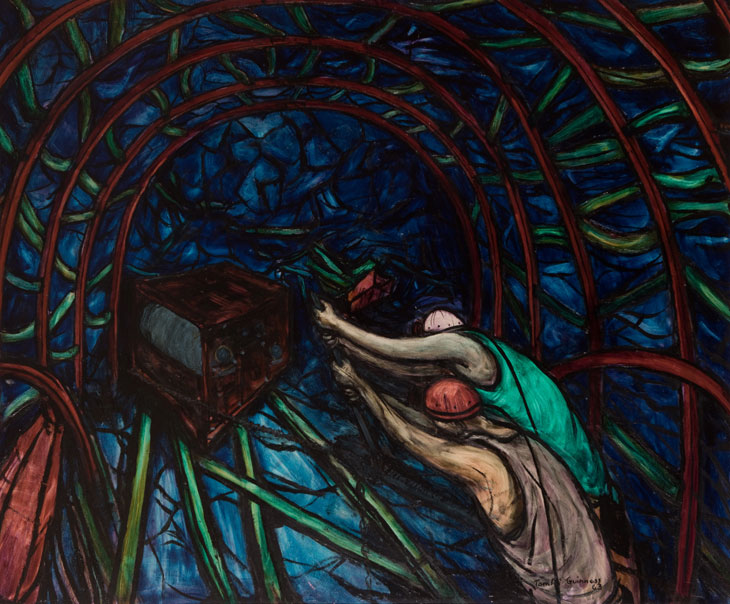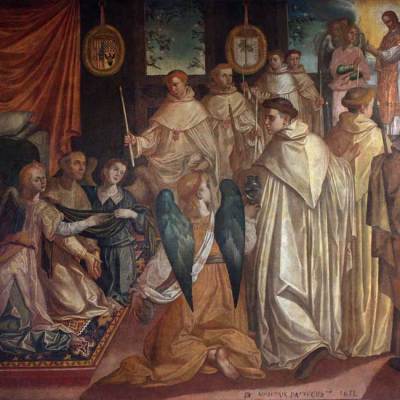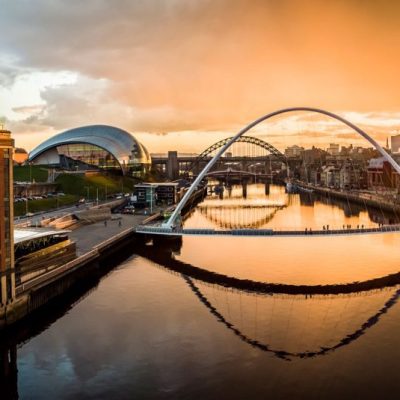It seems apt that the Mining Art Gallery in Bishop Auckland should open this Saturday (21 October), exactly six months after Britain went a full day without coal power for the first time since the Industrial Revolution. The County Durham town owes its history to coal mining: it flourished with the industry through the 19th century, declined with it through the 20th, and is now defining its future without it. The gallery, which is housed in a former bank in the town’s market place, celebrates the extraordinary paintings and drawings produced by local miners and residents over the course of the last century or so, and constitutes an important record of an industry and way of life that (in the UK, at least), is passing into history.
Inside the Mining Art Gallery, Bishop Auckland, County Durham © Colin Davison/courtesy the Auckland Project

The origins of the Mining Art Gallery go back more than 20 years to when local residents Gillian Wales and Robert McManners realised they shared an interest in the art of Tom McGuinness, a Bishop Auckland miner who painted colourful scenes of life in the region. They collaborated on a biography of the artist in 1997, before deciding to tell the wider story of mining art, from the Spennymoor Settlement painting group (Spennymoor is just a few miles from Bishop Auckland), to the Ashington group in Northumberland and individuals across the north east. In 2002, McManners and Wales published Shafts of Light: Mining Art in the Great Northern Coalfield, and over the years they have amassed an impressive collection of some 420 paintings, drawings and prints.
Changing Tracks (1963), Tom McGuinness. © Estate of Tom McGuinness. All rights reserved. DACS 2017

This group of works, known as the Gemini Collection of Mining Art, is at the core of the new gallery, although the curators have also secured numerous loans from public and private collections. The inaugural display is sensitively selected to include a range of subjects, styles, artists and information. The smaller rooms on the ground floor are given over to depictions of the mining industry itself. Some, like McGuinness’s dynamic, otherworldly Changing Tracks (1963), convey the intense physicality of the miners’ daily work. Others, like Tom Lamb’s The Faal (1980s) shed light on the horrific accidents and injuries that too many of them suffered or witnessed. (Lamb, who took his sketchbook into the mines and worked up compositions back on the surface, witnessed a fatal roof collapse within a fortnight of starting work at the age of 18.) Dark walls, a selection of miners’ tools, and a few sound effects evoke something of the subject without laboring the point. Upstairs, in a lighter set of galleries, are pieces documenting community and domestic life, from Durham’s annual Miners’ Gala to the racing pigeons that families raised in homemade pigeon crees.
Berrymans Chip Van (n.d.), Norman Cornish. © Gemini Collection, Zurbarán Trust

Art was very much a part of community life. Local painters would offer pictures to friends, family members and neighbours as gifts or tokens of exchange – and, as a result, it is difficult to determine how many remain in private hands. The establishment of the gallery has already resulted in new discoveries: on display upstairs are two portraits by Norman Cornish, one depicting his wife, Sarah, the other Mary Roach, who was married to his friend and fellow artist Jack Roach. Cornish first painted them on the back of some spare lino during a social call to Roach’s house in the 1930s. McManners and Wales hope that the publicity and visibility afforded by the opening of the gallery will encourage other people to come forward with undocumented works, stories, or archive material. Some people have already offered to donate art in their possession to the collection, Wales explains.
Men Going to the Shaft (1950), Norman Cornish. © Cornish Family Collection

The Mining Art Gallery is one of several new cultural venues being developed in the town. Auckland Castle, the former home of the Prince Bishops of Durham who organised and monopolised the local industry, is being renovated and a Museum of Faith established within its grounds. The castle’s magnificent set of Zurbarán paintings, currently on tour in the US, will return in time for the project’s completion – and by 2019 they will be joined by a major collection of Spanish art, to be displayed in another of the town’s former banks. (Such was the wealth of Bishop Auckland in its heyday that the market place boasted four.) The royal deer park and walled garden are being refreshed, a new visitor centre – the Auckland Tower – is rising in the town centre, and new hotels planned within the town.
These developments are being collectively managed by the Auckland Project, formerly the Auckland Castle Trust, which has partnered with the Gemini Collection and secured its new home. Each of the core projects seeks to build on an aspect of the town’s past to create jobs and communities for its future – something that McManners sees as crucial for the region’s prospects. ‘Heritage isn’t just taking ourselves from the past, understanding where we are and where we came from,’ he explains; ‘It’s taking that message into the future for other people to enjoy and understand.’ The painter Robert Olley, whose work features in the collection, agrees that the project represents a chance to revitalise the town while retaining links to its heritage: ‘I think it’s a great thing. Come back in two years’ time you’ll see vast changes.’
Setting a Prop (2008), Robert Olley. © Gemini Collection, Zurbarán Trust

Mining art is not exclusive to Britain and, as Auckland Project’s chief executive David Maddan notes, there are international links waiting to be made: with the Japanese mining artists of the 20th century, for example. But the Mining Art Gallery’s main strength lies in the personal, particular stories that it helps to tell. ‘It was probably opportune’, McManners comments about the timing of his and Wales’s wider project. ‘When we released Shafts of Light we collected 44 signatures from the artists at the launch. We think there are now only eight of those artists left alive – so it probably couldn’t have been done now.’
Displayed prominently in the opening room is Olley’s North Yard Seam Derby, completed in 2003. It shows a group of men riding the pit ponies (which were used to transport equipment into the mines) through the tunnels – snatching some entertainment after a hard shift, and flaunting company rules. When asked how he arrived at the idea for the painting, his answer is simple. ‘I used to do that. Everybody put a shilling in, and the ponies loved it. It was the only time they got to gallop.’
The Mining Art Gallery, Bishop Auckland, opens on 21 October.


